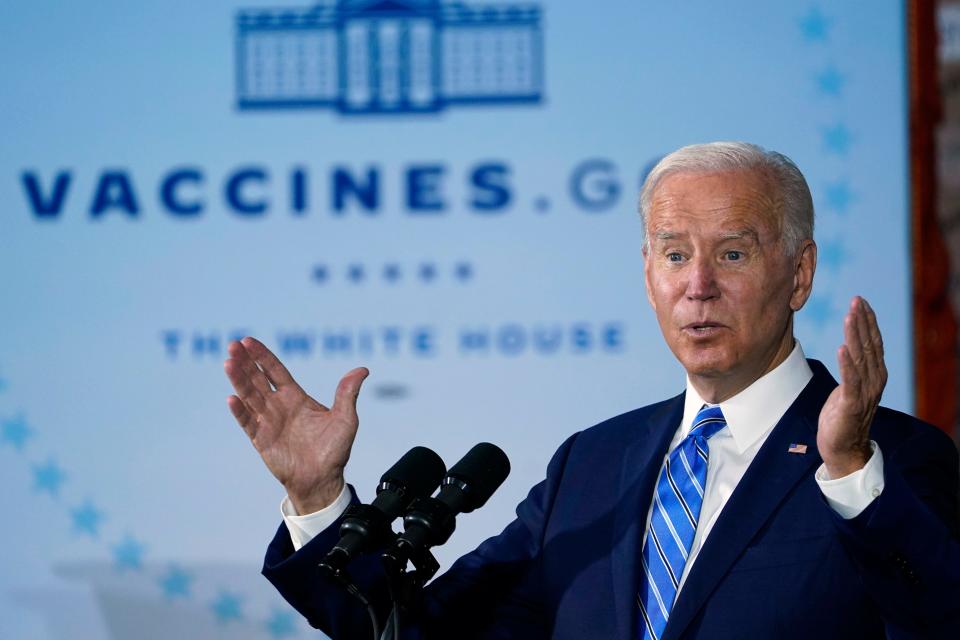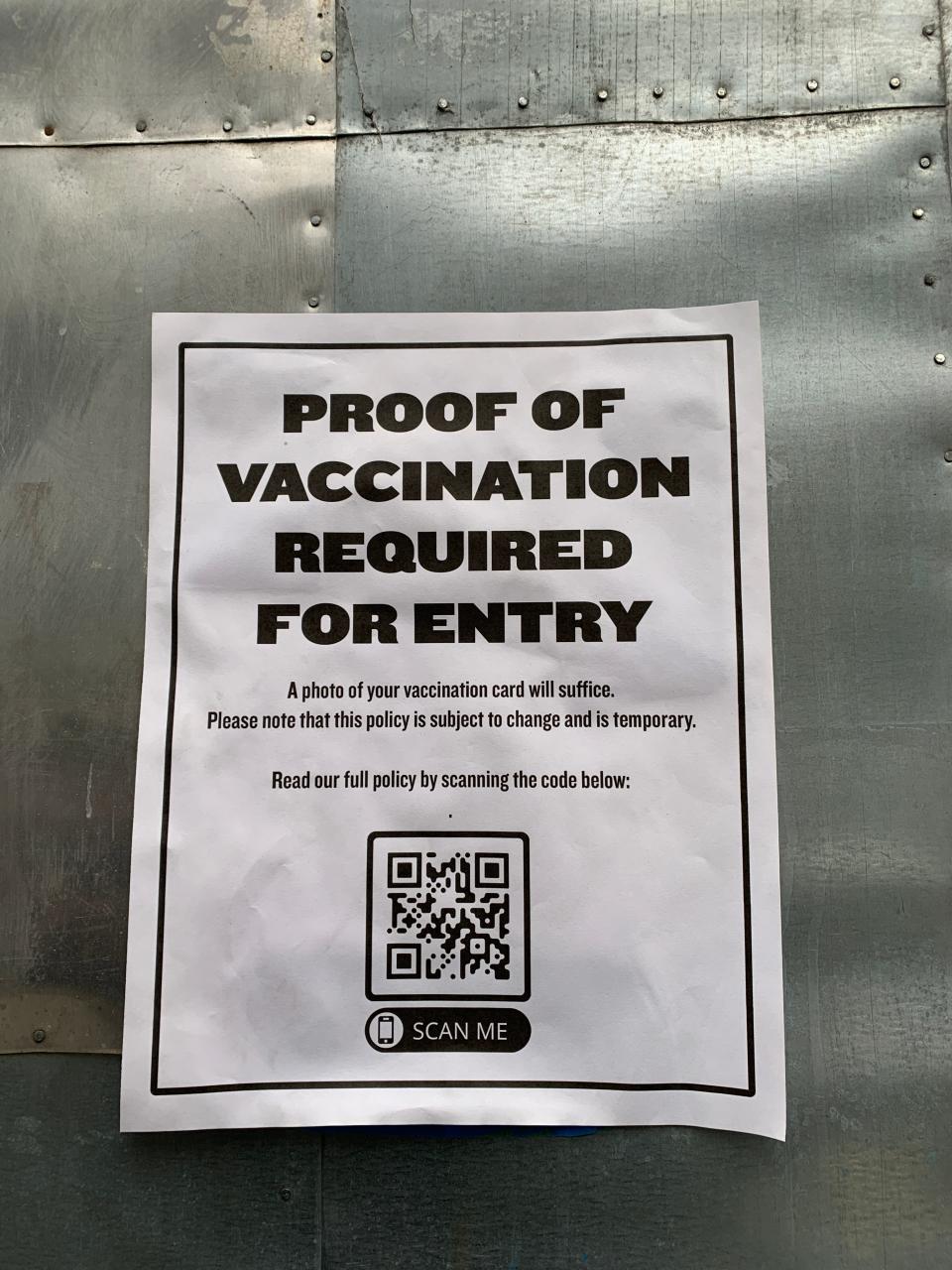$700K for defying vaccine requirement? Democrats push for jump in workplace fines
WASHINGTON – As the courts decide whether a COVD-19 vaccination requirement for 84 million workers can go into effect, Democrats are moving ahead on efforts to dramatically increase fines for workplace safety violations and double the number of federal inspectors.
The wide-ranging package of Democratic social spending priorities that passed the House last week and is pending in the Senate would increase the maximum penalty to $70,000 for a serious workplace violation and to $700,000 for a willful or repeated violation. The current top fines for those categories are $13,653 and $136,532.
A March coronavirus relief package included $100 million to hire 80 more Occupational Safety and Health Administration compliance officers, a start on President Joe Biden’s goal of having about 1,500 inspectors to deploy by the end of his first term.

The increase in fines and inspectors was not prompted by the Biden administration’s attempt to require workers at larger businesses to get vaccinated or be regularly tested. But the impact would be much greater because of how many workplaces are potentially affected by OSHA’s emergency vaccination rule.
“You're pairing that very sweeping directive with this attempt to put in place a historic and dramatic increase in penalties,” said Glenn Spencer of the U.S. Chamber of Commerce, which opposes raising the fines. “I think the timing would be unfortunate.”
Democrats say the current levels of fines are too small to serve as an adequate deterrent. They’re also much lower than other federal agencies can impose for environmental or financial violations.
David Michaels, an epidemiologist at George Washington University School of Public Health who headed OSHA during the Obama administration, said the average workplace safety fine is $5,473 for a serious violation.
“This may influence the behavior of a very small employer,” he said, “but it will have no impact on many medium-sized or larger employers.”
Where the workplace vaccine-or-mask requirement stands
OSHA can’t take any action yet to enforce the vaccination requirement for businesses with at least 100 workers. The New Orleans-based U.S. Court of Appeals for the 5th Circuit stopped the rule from going forward while challenges brought by conservative states and businesses proceed.
The Labor Department wants to require unvaccinated workers wear a mask on the job beginning Dec. 5 and be tested for COVID-19 at least once a week starting Jan. 4, 2022.

Workplace safety attorney Robert Ayers, a partner at Holland & Hart, said he is advising clients not to wait until the legal challenges are decided to start putting together an implementation plan as they could be facing quick deadlines if the requirement survives.
If it does, Ayers expects workers to complain to OSHA if their employer is not implementing the standard.
“This is a sensitive hot button issue,” he said. “And when employees are seeing people in their office who maybe are not wearing a mask if they're supposed to be, they are very sensitive to that.”
Pandemic caused uptick in complaints to OSHA; inspectors at historic low
As is the case with other workplace rules, a primary way OSHA expects to enforce the standard is by responding to complaints.
With COVID masking and vaccination requirements, there’s an added political element that creates a difficult dynamic for employers, said Mark Wilson, vice president for health and employment policy at HR Policy Association, which represents human resource officers at more than 400 major companies.
“The last thing they want right now is another thing that's going to cause division in their workplaces,” he said. “And this issue, unfortunately, is very polarizing in the country.”

Wilson and Ayers also said worker complaints could overwhelm the already extremely busy inspectors.
“That’s a huge issue,” Ayers said.
The pandemic significantly increased the number of complaints OSHA received from workers alleging retaliation for reporting violations, according to the Labor Department’s internal watchdog.
“OSHA was challenged to complete investigations in a timely manner before the pandemic, and the potential exists for even greater delays now,” the Office of Inspector General said in a report last year.
The number of OSHA inspectors is at an historic low, Labor Secretary Marty Walsh told Congress this summer when he defended the administration’s request for more funding.
Walsh said the $100 million included in March’s American Rescue Plan will enable the department to restore inspectors to the level it was at 35 years ago. The additional money requested in the 2022 budget would be the next step in Biden’s goal of doubling inspectors over four years.
"I would love OSHA at some point to get to a point where we're not responding to accidents on the job site, that we're actually being proactive, working with businesses on how do we create better, safer work conditions and work sites," Walsh told a Senate appropriations subcommittee this summer. "We're not at that point right now."
The average business can expect a visit from OSHA once every 134 years, said Sidney Shapiro, a Wake Forest law professor who has worked as an OSHA consultant.
OSHA prioritizes putting inspectors in areas with the highest rates of injuries or disease.
“And then for the rest,” Shapiro said, “they rely on employees to contact them.”
Attorney: Good-faith effort at following rules likely won't bring harsh penalty
When OSHA imposes fines, they’re often settled for pennies on the dollars, he said, because the agency maintains its job is not to raise money for the government but to get businesses to come into compliance.
If the workplace vaccination requirements go into effect, attorney Bob Lian said he would be surprised if OSHA comes down hard on a business that’s not doing everything right.
“I think the goal here is to solve a public health crisis,” he said. “If employers are making good faith efforts at compliance…you're probably not going to get the hammer dropped on you.”
Lian, who leads Akin Gump’s labor and employment practice, argues the current level of fines are significant enough to serve as a deterrent. Raising fines as high as Democrats want them to go, he said, will incentivize employers to fight OSHA rather than to resolve any problems and move on.
Ayers, the workplace safety lawyer at Holland & Hart, said that in addition to fines, businesses already face other potentially significant costs for not following the rules. Racking up too many citations can disqualify them from future contracts. And fixing problems can be expensive if new equipment, or other abatement measures, are required.
The U.S. Chamber’s Spencer sees a difference between how Democratic and Republican administration’s approach OSHA. Republicans, he said, tend to emphasize outreach and incentive programs while Democrats like to publicize large fines as a way of “shaming through press releases.”
The possible hike of the maximum penalty to $700,000 fits that mold, he said.
“It's not going to be applied to everybody,” Spencer said. “But OSHA will use that potential fine as leverage to say, `Employers, we're coming after you for a violation and you better work with us and you better succumb to whatever we tell you,’ and use that as sort of a bargaining chip.”
Even if the Senate overcomes significant obstacles to approve the social spending package that includes the increase in fines, that provision may not stay in the bill.
In addition, OSHA may not know for weeks whether it can enforce the vaccination rule.
Agency officials have asserted confidence that the rule will survive the court challenge – and that they will not have to penalize most affected businesses when it does.
“We know,” acting OSHA chief Jim Frederick told reporters when the rule was announced, “that the vast majority of workplaces will be in compliance.”
Pending rule: 20 questions, answers on OSHA's COVID-19 vaccine rules for workers
Rule on hold: Federal appeals court blocks COVID-19 vaccine-or-testing rule for large companies
Maureen Groppe has covered Washington for nearly three decades and is now a White House correspondent for USA TODAY. Follow her on Twitter @mgroppe.
This article originally appeared on USA TODAY: Democrats want major increase in workplace fines, vaccine enforcement

